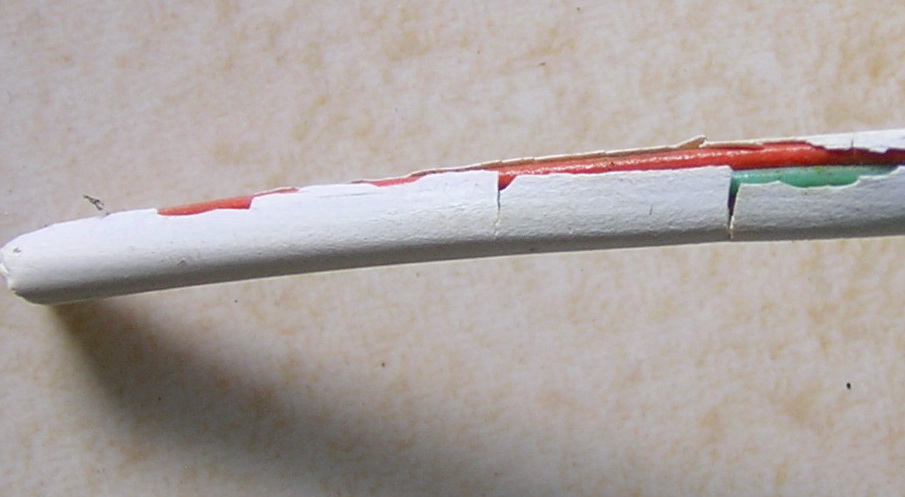“Cable is cable” isn’t it?
What type of telephone cable? Will anything do? Not really. Particularly for running cables externally. As a telephone engineer, I encounter many cases where internal cable has been used externally. See the picture above. It never ends well…
Internal? External? What’s the difference?
It’s literally “black and white” – cable designed for outdoor use has a black outer cover (“sheath”). It is designed to resist extremes of temperature, sunlight and water. Internal cable is generally white-sheathed, and is not designed for an external environment. Typically, folks use it to run an extension from a master socket to a study, bedroom, etc., via the outside of the house.
What happens to external cable if it is used outside?
As in the photo above, the sheath becomes brittle, cracks, then the insulation on the cores (small coloured wires inside the sheath) begins to crack, leaving the copper exposed. However, the damage may not be easily found.
Does My Internet Stop Working?
Yes and no. This is the tricky part. Moisture gets into small cracks in the surface of the cores, and causes short-circuits, earth faults (interference with, well, “the rest of the earth”!), or both. However, this may only happen when rain falls. There may be a characteristic “swishing” or “crackling” noise on the line, or a strange humming noise. Or both. The problem is that this may literally change with the weather, and not always happen when an engineer comes to investigate.
Intermittent faults like this are difficult to fix. They almost seem to wait until an engineer has left before occurring again, then disappear when he or she arrives. Does your internet stop working? Yes, eventually. However, this is often a long, slow, frustrating, annoying process.
What’s the answer?
Never use internal cable externally. If it has been used, then replace it. Simple.
Is external-grade cable hard to find?
No. It’s readily available via Amazon or eBay, often sold by the metre. The correct specification is “CW1308”. It’s an old BT part number.
Is it tricky to replace?
Not really. Most of the joints, clips and other components and tools are available on-line. See my early blog on cable jointing.
Could someone come and replace it for me?
Yes. I am based in The North East, but have contacts, independent engineers like me, across the UK. If I do manage to find you an engineer, all I ask in return is a short “Google Review”, or similar Facebook endorsement which reassures other enquirers that I am vaguely reputable and the publisher of some reasonably helpful advice.
Hopefully, this blog has given some vital background on the question “what type of telephone cable”. Meanwhile, if you are local to me, please get in touch.


Need help with boosting internet signal. Have a small mast on outside of building
Would be handy to connect to router but don’t know how. I’m in Hayle in Cornwall. Think you may have helped me once before and you were good. Ok that’s the grovelling over. Thanks Dave
Hello. Do you know if there is generally good broadband in your immediate area? If not, and talking of masts, the results from 4G mobile broadband, using fixed aerials on masts, can be outstanding. Can you advise your general location, or postcode, please.
What is the correct cable to run from a pole connection that enters a garage then needs to travel through underground conduit to the house is the CW 1308 or cw1326 thanks
I would always choose armoured and jelly-filled cable, as it adds an further level of protection should the conduit be compromied by a digger’s bucket. However, external-grade CW1308 would probably suffice. I have seen both used in this kind of application.